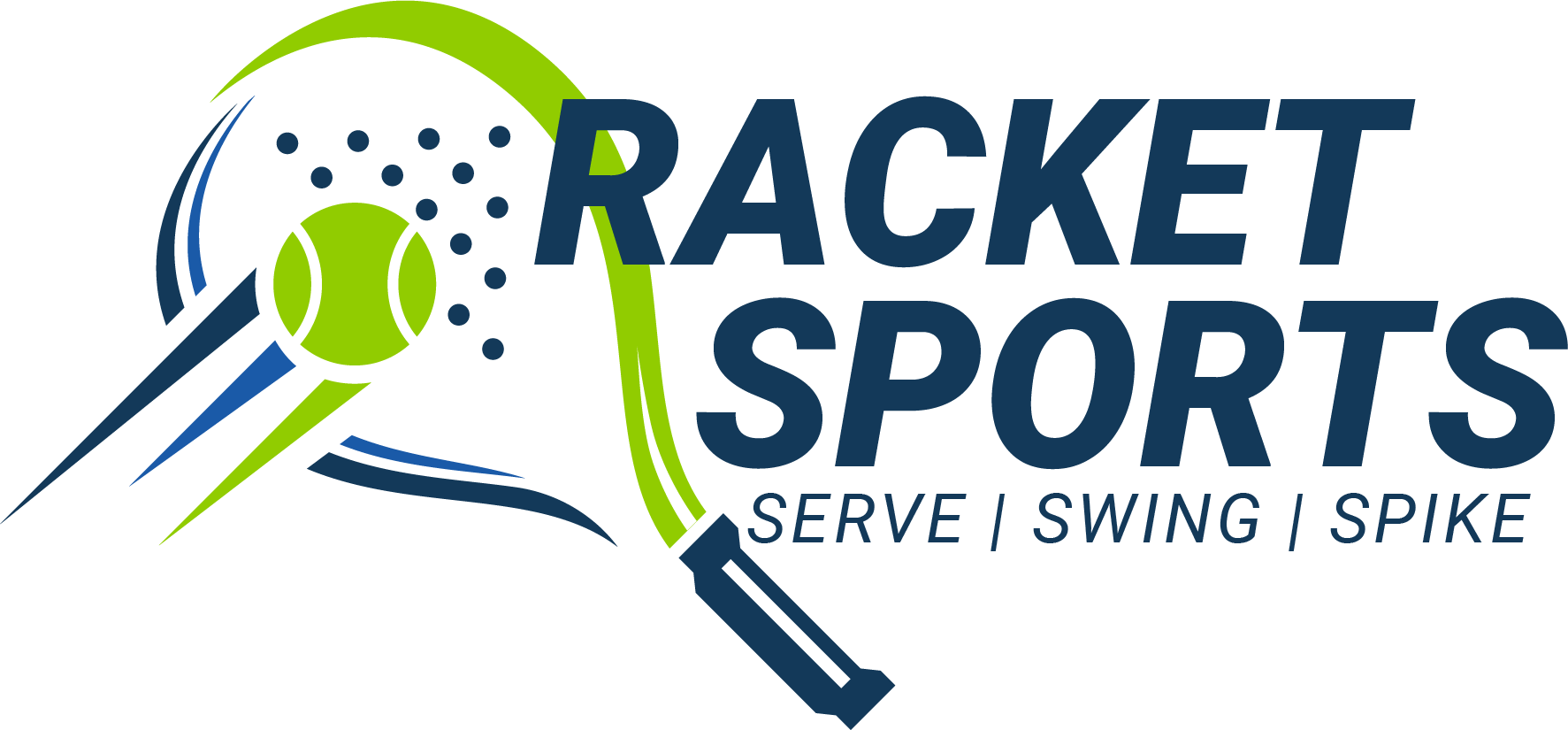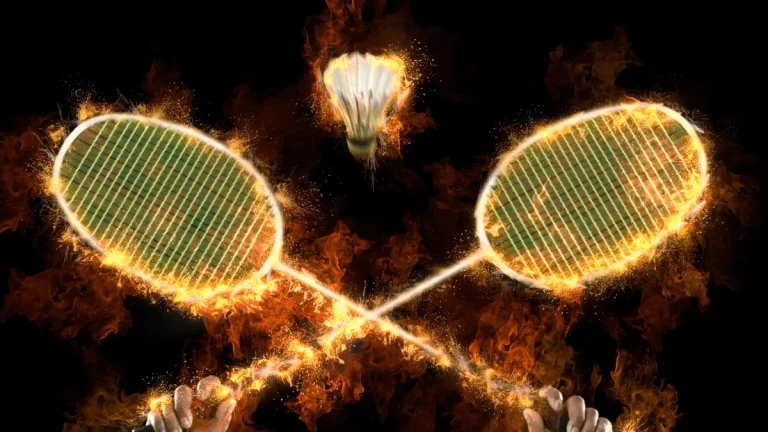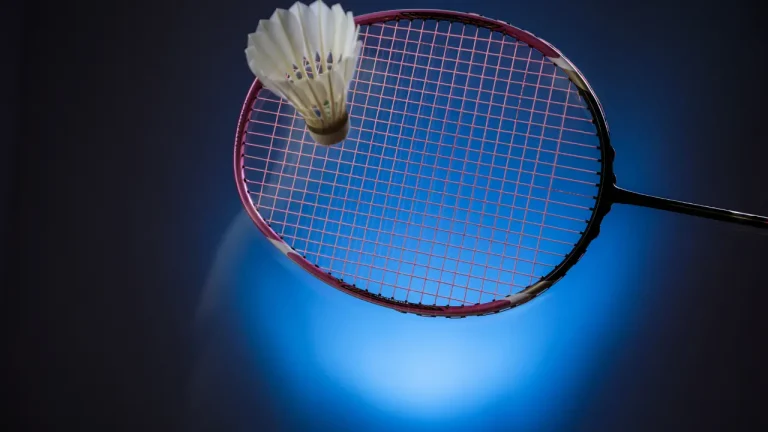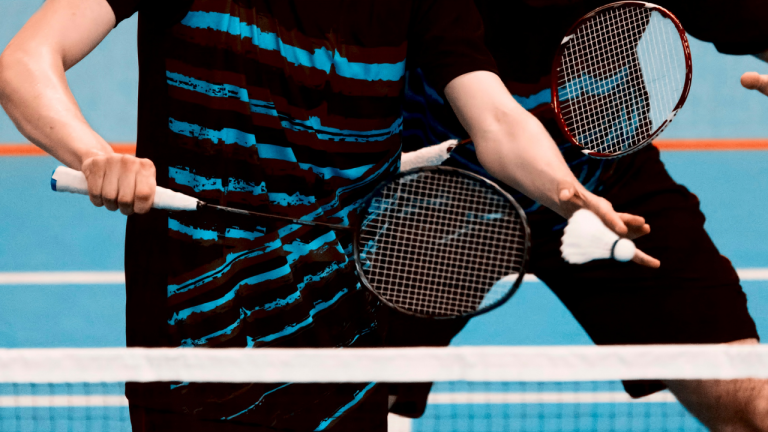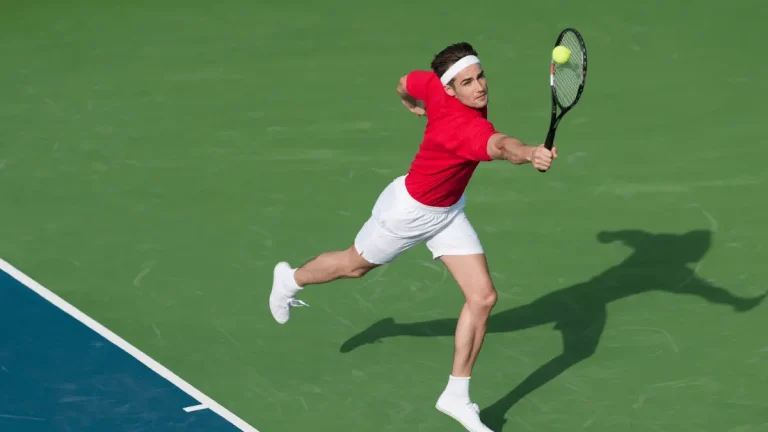How Fast Does a Tennis Ball Go?
In Tennis, a slight difference in angle, court position, swing, and reflexes can take you out of the game. Therefore, when a pro tennis player hits the ball with pinpoint accuracy, it goes at an average speed of about 75 mph (120 kph), with tennis serves being the fastest type of shots, reaching an average speed of 125 mph (201 kph). However, the record for the quickest tennis serve is 163.7 mph, set by Australian player Samuel Groth in 2012.
There are multiple factors involved in hitting a tennis ball at high speeds, such as the player’s strength and conditioning, the type of shot – serves vs. groundstrokes, the use of topspin or backspin, the court surface, whether it’s grass, clay, or hardcourt, and the ball inflation and felt condition.
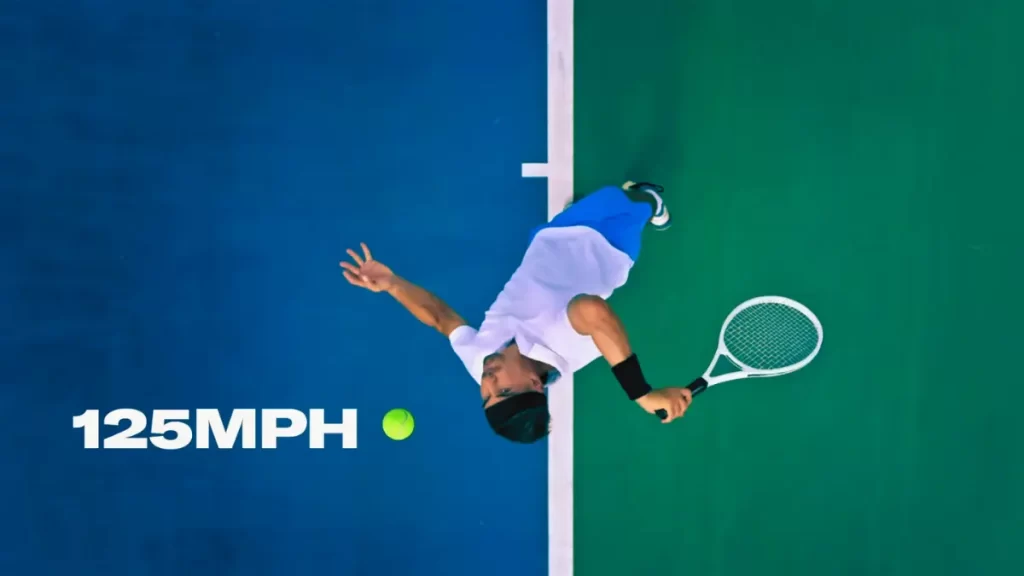
Moreover, it doesn’t matter whether you’re playing tennis with a wooden tennis racket or a modern one, but we all want to know some queries: how can I hit the ball faster and harder? How do your shots compare, and what factors go into shooting faster? Are you leaving speed out on the court?
If you do not know the limits of your speed and power on the court, let’s discuss!
What is the Average Speed of a Tennis Ball?
On average, a tennis ball struck in a topspin forehand or backhand travels through the air between 50 to 80 mph. However, advanced players can hit shots well over 100 mph. The serve is the fastest shot in Tennis, with professionals regularly serving over 120 mph. The record for the quickest tennis serve is 163.7 mph, set by Australian player Samuel Groth in 2012.
The speed of groundstrokes usually ranges between 60-90 mph. Volleys and returns of serve are generally slower since the ball has lost momentum, so they tend to be between 30-60 mph. Overall, the speed of a shot depends on several factors: the player’s strength and technique, the type of shot, and court conditions.
Types of Speed-based Shots in Tennis Game
Tennis has three main types of shots: the serve, the forehand, and the backhand. These shots vary in speed depending on factors like gender and individual ability. This section will discuss the different types of tennis shots in detail, looking at speed variations between male and female players and identifying the fastest players for each shot type.
Fast Tennis Serves
The fastest shots are called serves. When players hit the ball for their first serve, they make it go super fast by plugging it in a certain way, either flat or sliced. Because these serves are so speedy, the player serving usually has a better chance of winning the point. The person trying to return the ball often finds it challenging to hit it back in a way that causes problems for the server.
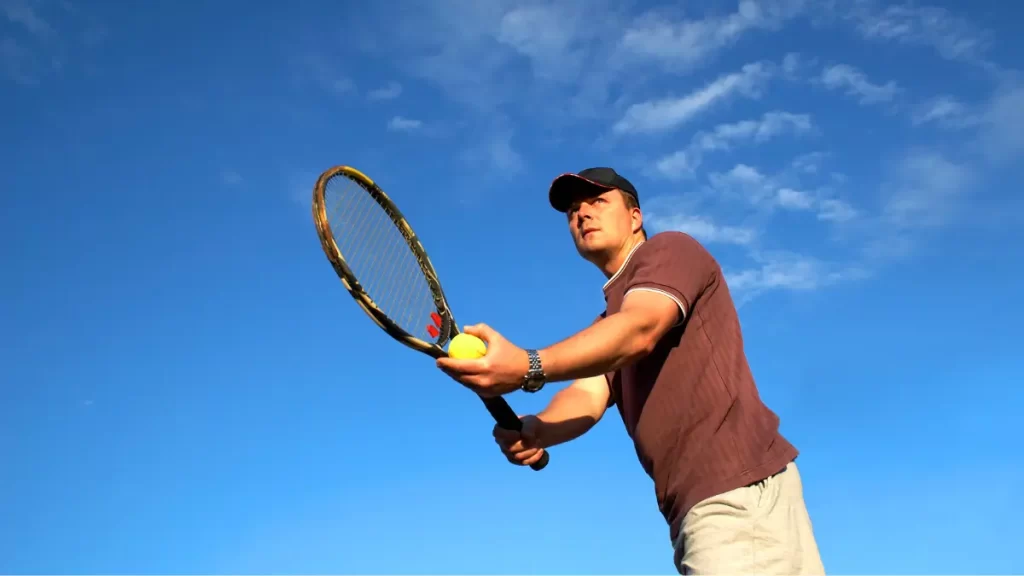
Average Serve Speeds in Men’s Tennis
In men’s tennis, it goes really fast when they hit the ball to start a point. On average, the first serves travel about 125 miles per hour (201 kilometers per hour). But here’s an interesting fact: the second serves are a bit slower, around 110 mph (177 kph). Players are extra careful with second serves because they lose the point if they make a mistake.
Now, there’s a player named Alexander Zverev, and he’s like the speed king among all the guys playing right now. His first serve is incredibly fast, averaging 139 mph (224 kph). The next fastest is Matteo Berrettini, with an average first serve speed of 128 mph (206 kph).
After Berrettini, the speeds of the serves by other players are similar. So, Zverev and Berrettini are like the speedsters of men’s Tennis serves!
Fastest Serves in Men’s Tennis
The fastest tennis serve ever hit by a guy was super speedy at 163 miles per hour (263 kilometers per hour). Sam Groth did this excellent serve in 2012 at the Busan Open Challenger. Even though it was the fastest ace in tennis history, the ATP (Association of Tennis Professionals) doesn’t officially count speeds from Challenger events.
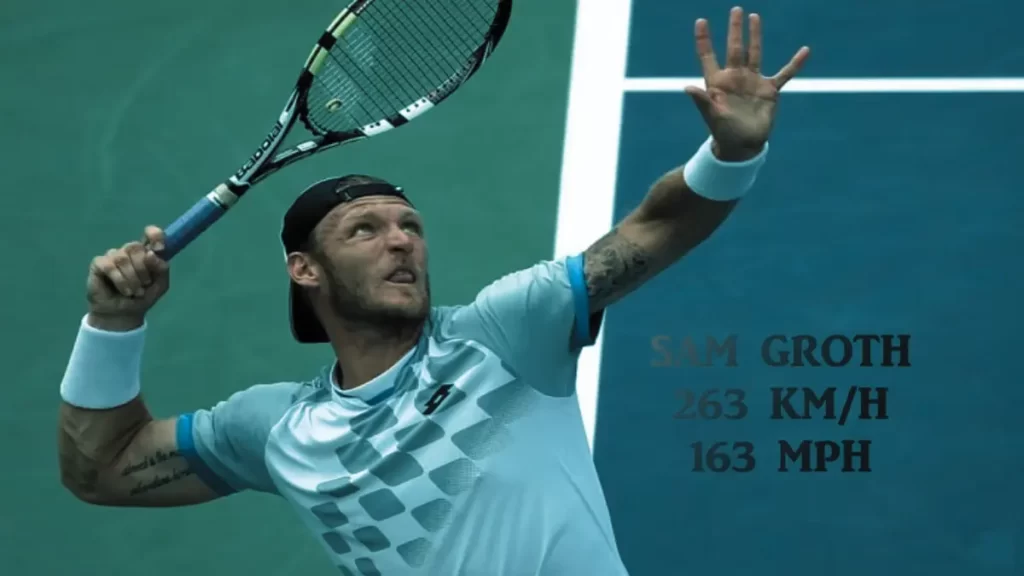
The ATP’s official record for the fastest serve is a bit slower at 157.2 miles per hour (253 kilometers per hour), and it was done by John Isner in 2016 at the Davis Cup.
Now, for second serves, the fastest one was hit by Reilly Opelka at an incredible speed of 144.8 miles per hour (233 kilometers per hour). He did this in 2021 during the Italian Open quarter-finals.
| Player | Speed (mph) | Event | Recognized by ATP |
| John Isner | (157.2 mph) | 2016 Davis Cup | Yes |
| Feliciano López | (152.0 mph) | 2014 Aegon Championships | Yes |
| Milos Raonic | (155.3 mph) | 2012 SAP Open | Yes |
| Albano Olivetti | (160.0 mph) | 2012 Internazionali Trofeo Lame Perrel–Faip | No |
| Ivo Karlovi? | (156.0 mph) | 2011 Davis Cup | Yes |
| Andy Roddick | (155.0 mph) | 2004 Davis Cup | Yes |
| Joachim Johansson | (152.0 mph) | 2004 Davis Cup | No |
| Sam Groth | (163.4 mph) | 2012 Busan Open Challenger Tennis | No |
| Ryan Harrison | (152.0 mph) | 2013 Western & Southern Open | Yes |
| Jerzy Janowicz | (156.0 mph) | 2012 Pekao Szczecin Open | No |
How Fast Women serves
Usually, women hit tennis balls a bit slower than men, about 20% less, even when it comes to serving.
On average, women’s serves go at 105 mph (169 kph).
Now, when it comes to the best women players like Naomi Osaka and Serena Williams, they hit the ball hard. They’re faster than most women players. And here’s something cool: Naomi and Serena are among the top 20 for switching the fastest serve ever in women’s tennis.
Fastest Women’s Tennis Serves
The fastest serve ever in women’s tennis was smashed by Georgina Garcia Perez at a blazing 136.7 miles per hour (220 kilometers per hour) during the 2018 Hungarian Ladies Open.
But here’s a thing – just like with men’s records, the WTA (Women’s Tennis Association) doesn’t count speed records from tournaments before the main draw phase of WTA Tour tournaments.
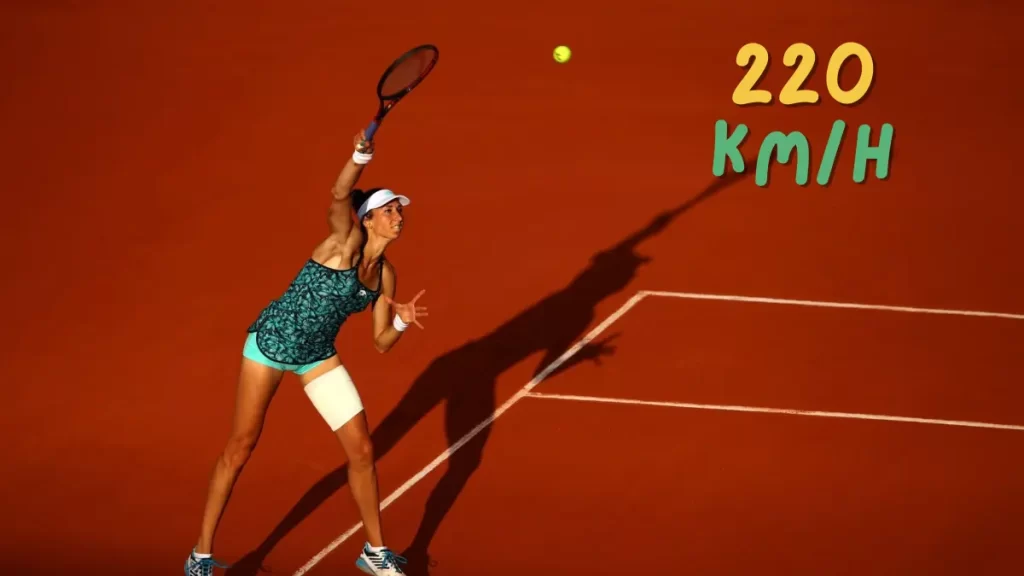
The fastest serve officially recognized by the WTA was by Sabine Lisicki in 2014 at the Stanford Classic, clocking in at 131 miles per hour (210.8 kilometers per hour).
Let’s talk about two big names in women’s tennis: Serena Williams and Naomi Osaka. Serena holds the 8th place for hitting the fastest serve ever by a woman, zooming at 128.6 miles per hour (207 kilometers per hour). Osaka’s fastest serve, which got her 14th place on the list, reached 125 miles per hour (201.2 kilometers per hour) at the 2016 US Open.
| Player | Speed (mph) | Event | Recognized by WTA |
| Sabine Lisicki | (131.0 mph) | 2014 Stanford Classic | Yes |
| Ivana Jorović | (128.6 mph) | 2017 Fed Cup | No |
| Brenda Schultz-McCarthy | (130.0 mph) | 2006 Cincinnati Masters (qualifiers) | No |
| Venus Williams | (129.0 mph) | 2007 US Open | Yes |
| Serena Williams | (128.6 mph) | 2013 Australian Open | Yes |
| Georgina García Pérez | (136.7 mph) | 2018 Hungarian Ladies Open | No |
| Aryna Sabalenka | (133.0 mph) | 2018 WTA Elite Trophy | No |
| Alycia Parks | (129.0 mph) | 2021 US Open | Yes |
| Ajla Tomljanovic | (129.0 mph) | 2018 Cincinnati Masters | Yes |
| Julia Görges | (126.1 mph) | 2012 French Open | Yes |
Fast Tennis Forehands Go
The forehand shot is the second fastest in tennis, right after the serve.
When players hit a forehand, they use a powerful body movement, making the shot generally faster than backhands.
Average Speed of Men’s Forehand
On average, men hit their forehand shots at a speed of 78 miles per hour (125 kilometers per hour).
These numbers might sound incredible, especially considering how many forehands are hit during a tennis match—hundreds if not thousands!
To consistently hit at these speeds, players need incredible physical endurance. The rate of forehands depends on things like the player’s technique, how they rotate their body, their overall movement, being accurate at the perfect moment to hit the ball, and, of course, having a lot of raw physical power.
Fastest Men’s Forehand
The speed record for the fastest forehand ever in men’s tennis is an impressive 124 miles per hour (199 kilometers per hour), and Andy Murray smacked it.
Other top players known for their incredibly powerful forehands include Fernando Verdasco, James Blake, and Andrey Rublev. They’ve all shown some solid forehand skills on the court.
| Player | Average Forehand Speed (Mph) | Average Forehand Speed (Kph) |
| Keys | 81 | 131 |
| Mlandenovic | 78 | 126 |
| Kulichkova | 77 | 124 |
| Giogi | 79 | 127 |
| Hradecka | 79 | 127 |
| Stosur | 78 | 125 |
| Hercog | 78 | 126 |
Women’s Tennis Forehand Speed
In women’s tennis, the speed of forehand shots is around 74 miles per hour (119 kilometers per hour).
Now, there’s a player named Madison Keys, and she stands out because her forehand is extra speedy. Her average forehand speed is more than 80 miles per hour, specifically 81.29 mph (130 kph).
Even the famous Williams sisters, Serena Williams and Venus Williams, known for hitting the ball hard, have an average forehand speed of “just” 73 miles per hour (117 kilometers per hour). This means that while they hit the ball with power, they’re strategic about choosing the right moment to speed it up and score points.
Women’s fastest forehand record
Serena Williams has the record for the fastest forehand ever recorded by a woman, and it’s a whopping 96 miles per hour (154 kilometers per hour).
Serena’s forehands have always been pretty scary; this record proves it. Her rallies or the back-and-forth hits in a match, could quickly go head-to-head with most male professional players.
Tennis Backhand Speed
In tennis, backhands are the slowest type of shot. This is because they require tricky body movements and rotations to pull off.
Players can use one or two hands to hold the racket when doing a backhand—it depends on what feels right for them. Interestingly, players with two hands tend to hit backhands at higher average speeds than those with one hand.
Even though backhands are considered the slower shots, professional tennis players still manage to hit them at incredibly high speeds. These speeds are way faster than regular players usually achieve with their forehand shots.
Men’s Tennis Backhand Speed
On average, men hit their backhands in tennis at a speed of 70 miles per hour (112 kilometers per hour).
Among today’s ATP players, Stan Wawrinka stands out for having one of the fastest backhand averages at 75 miles per hour (120 kilometers per hour). Sometimes, he even goes beyond that, reaching more than 82 miles per hour (131 kilometers per hour) on certain shots.
Other top players like David Ferrer, Novak Djokovic, and Rafael Nadal consistently hit their backhands at speeds above the average. Nadal has the fastest backhand ever!
Fastest Men’s Backhand
The fastest backhand recorded in men’s tennis was a super quick 103 miles per hour (165 kilometers per hour). And guess who did it? The tennis legend Rafael Nadal, during a match against Novak Djokovic at the National Bank Open in Montreal, Canada. That’s some serious speed from Nadal’s backhand!
| Player | Average Backhand Speed (Mph) | Average Backhand Speed (Kph) |
| Cuevas | 75 | 121 |
| Bellucci | 75 | 120 |
| Ankuznetsov | 76 | 122 |
| Gulbis | 76 | 122 |
| Verdasco | 75 | 120 |
| Giraldo | 75 | 121 |
| Wawrinka | 75 | 121 |
Women’s Tennis Backhand Speed
Regarding backhands in tennis, the speed difference between men and women is smaller than for forehands and serves.
Women hit their backhands at 68 mph (109 kph) on average.
Some notable players in this category, known for their strong backhands, include Camila Giorgi, Madison Keys, and Lucie Hradecká. They’ve got some impressive skills in handling those backhand shots!
Fastest Women’s Backhand
Serena Williams, a tennis legend, holds the record for the fastest women’s backhand ever recorded. She unleashed a powerful backhand at a speed of 97 miles per hour (156 kilometers per hour) during the 2004 Wimbledon quarterfinal. That’s not much less than the record for men! Serena knows how to bring some serious speed to her backhand shots.
| Player | Average Backhand Speed (Mph) | Average Backhand Speed (Kph) |
| Begu | 74 | 119 |
| Keys | 75 | 120 |
| Hradecka | 73 | 118 |
| Knapp | 73 | 117 |
| Tomljanovic | 74 | 120 |
| Babos | 74 | 119 |
| Li | 75 | 120 |
What Factors Influence the Speed of a Tennis Ball?
The speed of a tennis ball during play depends on several factors. The most significant influences are the shot type, the player’s technique and athleticism, equipment, and environmental conditions. Factors like a player’s strength, timing, racquet, string tension, and the weather can also impact ball speed.
This section will examine the key factors determining how fast a tennis ball travels when hit by professional and amateur players. Understanding these influences provides insight into the mechanics of the game.
- The player’s strength and technique – The body’s kinetic chain working together to transfer energy to the ball is key. Proper approach like footwork, backswing, torso rotation, and follow-through allows advanced players to generate significant racket head speed.
- Type of shot – The serve is hit when the ball is motionless, resulting in the highest speeds. Groundstrokes use the pace of the ball coming to the player, producing slower shots. Volleys have the least momentum, leading to slower shots.
- Spin – Topspin shots dip downwards after the bounce, resulting in a faster picture. Backspin (slice) shots skid low after landing, producing slower ball speeds.
- Court surface – Clay courts slow down shots more than hard courts. Grass also plays quicker than clay. A hard court typically allows the ball to travel 5-10% faster than on clay.
- Ball inflation – Higher-inflated balls travel faster through the air than under-inflated balls. Pressureless balls slow shots down.
- Temperature and humidity – Hot, humid days lead to slower shots as the ball contacts the racket for a fraction longer. Colder, drier days speed the ball up slightly.
- Wind – Downwind shots travel faster through the air. Headwinds slow the ball down, requiring more effort to hit through the shot.
- Altitude – The ball travels quicker at higher altitudes with less air resistance. Players notice a significant increase in speed in cities like Denver or Mexico City.
- Court maintenance – Fluffy, pilled tennis balls slow down versus new balls. Similarly, dirty, gritty court surfaces impede ball speed compared to cleanly swept courts.
How Do Tennis Players Hit Shots So Fast?
Tennis players can hit blistering shots by generating high racket head speed and efficiently transferring energy into the ball. Here are some of the bio-mechanical factors that result in fast tennis shots:
- Powerful muscles – Tennis requires full-body rotational strength in the shoulders, core, hips, and legs to whip the racket through contact. Strength training builds this rotational power.
- Flexible muscles – Flexibility allows a more excellent range of motion so players can take a full backswing and follow through to aid racket head speed.
- Weight transfer – Shifting body weight from the back foot to the front foot adds momentum to the shot.
- Hip and shoulder rotation – Rotating the shoulders perpendicularly along the shot line increases racket head speed significantly. Forward hip rotation helps transfer energy up the kinetic chain.
- Wrist snap – Flicking the wrist over at contact increases pace by adding angular velocity to the end of the racket for that split second of impact.
- Grip – The continental grip allows maximum free movement of the wrist compared to eastern or semi-western grips.
- Swing path – Swinging low to high in a circular path accelerates the racket head like a slingshot.
- Point of contact – Hitting the ball out in front of the body so the arm extends allows more excellent acceleration through the ball.
- Follow-through – Extending the follow-through adds to overall speed generation.
Proper technique, strength, flexibility, and timing give top tennis players the biomechanical tools to absolutely cream the ball, resulting in the fast speeds we see on TV.
Take Away
Tennis is often described as a “game of inches.” Slight differences in timing, court positioning, and angle selection can determine winners from errors. As such, the speed of the shots plays a crucial role. Elite players like Venus and Serena Williams, Rafael Nadal, and Roger Federer can hit balls at almost superhuman velocities, forcing opponents into hurried responses or weak shots prime for attacking.
While very few recreational players will ever approach pro speeds, understanding the various factors affecting ball speed provides beneficial insight into how to hit faster, more effective shots.
With dedicated fitness work, proper technique adjustments, and premium equipment, you can have your photos bringing the heat on game day. Just remember that timing, control, and percentage play matter, too, to truly mirror the professionals. Harness velocity, but wield it wisely.
Frequently Asked Questions
How fast can a professional tennis player hit a ball?
The fastest recorded tennis serve is 163.7 mph by Samuel Groth. However, on average, professional male players serve around 120-150 mph, while female players intermediate 90-110 mph serve. Forehand and backhand groundstrokes can travel 80-100+ mph for advanced players.
What is the average speed of a high school tennis serve?
The average first serve speed for competitive high school players ranges from 75-90 mph, while second serves are between 60-80 mph. Less experienced players serve in the 50-70 mph range.
How does the tennis ball speed compare to other sports?
A tennis ball generally travels faster than a baseball, golf, table tennis, and soccer ball. Only jai alai, badminton, and squash exceed tennis ball speeds on a typical professional shot.
What factors affect how fast a tennis ball travels?
The main factors are The player’s strength and technique. The type of swing. The ball inflation pressure. The court surface. Temperature/humidity. Wind conditions. Altitude. The condition of the ball and court surface. Modern rackets, strings, and balls also boost tennis ball speed significantly.
